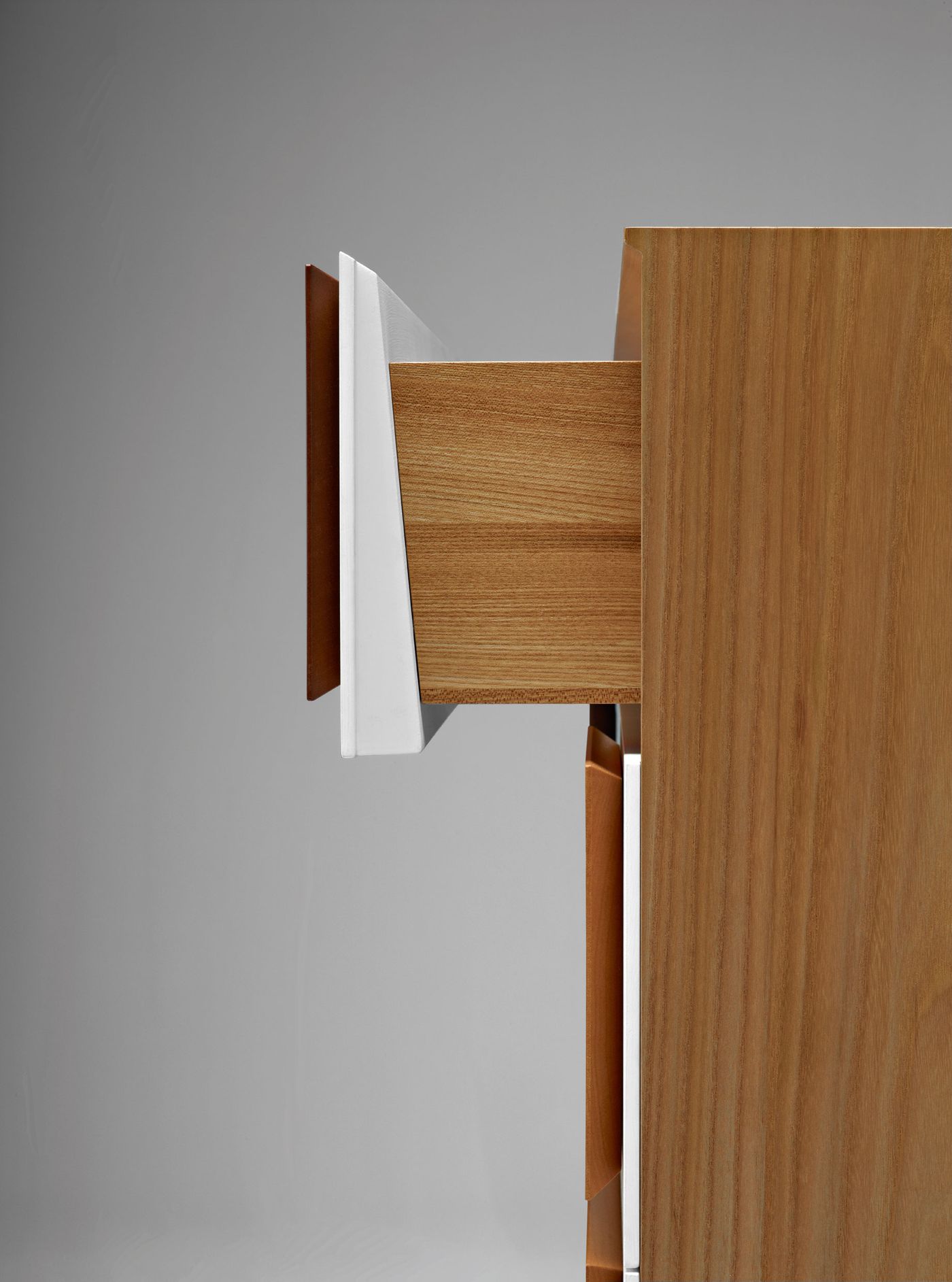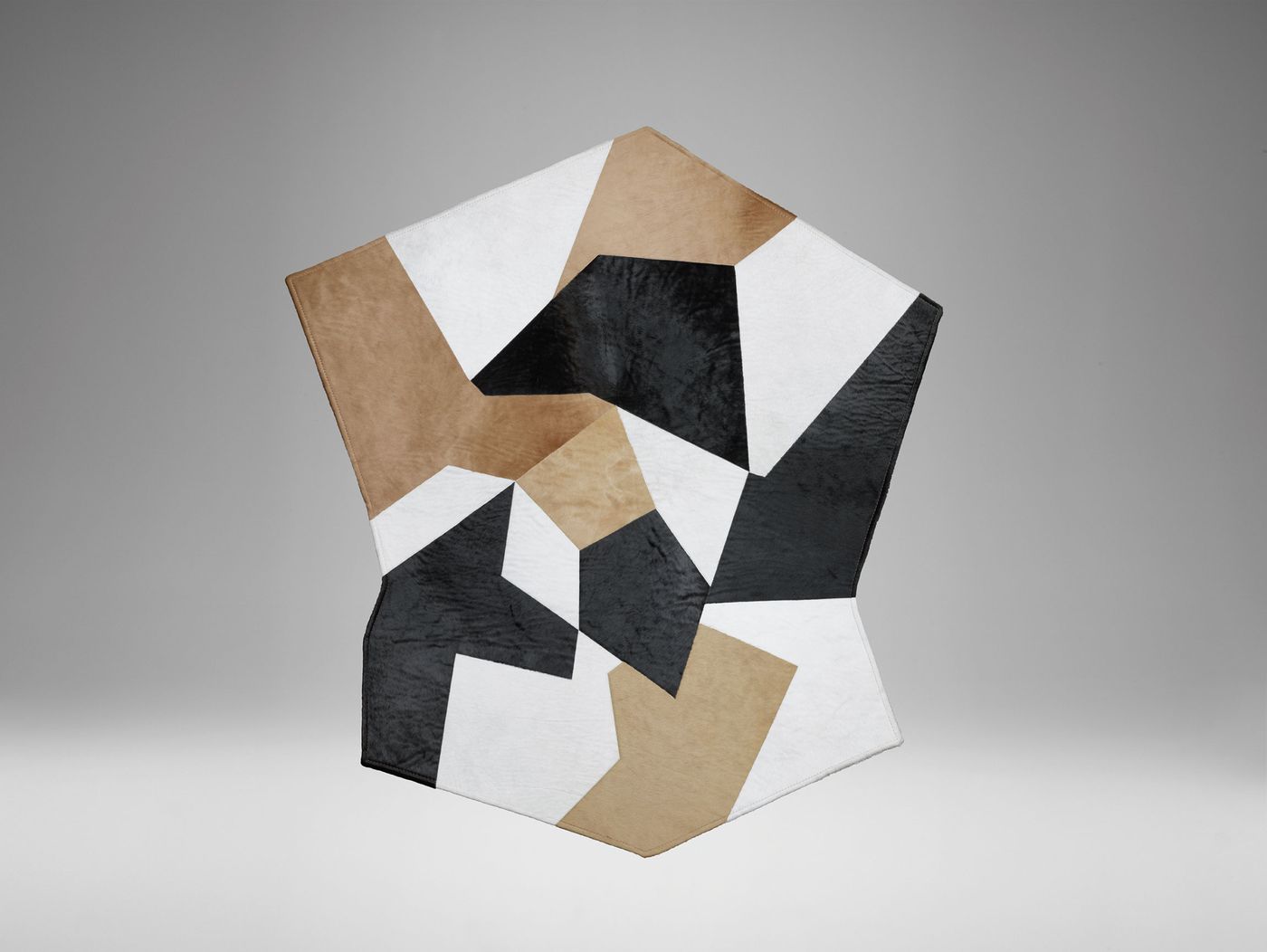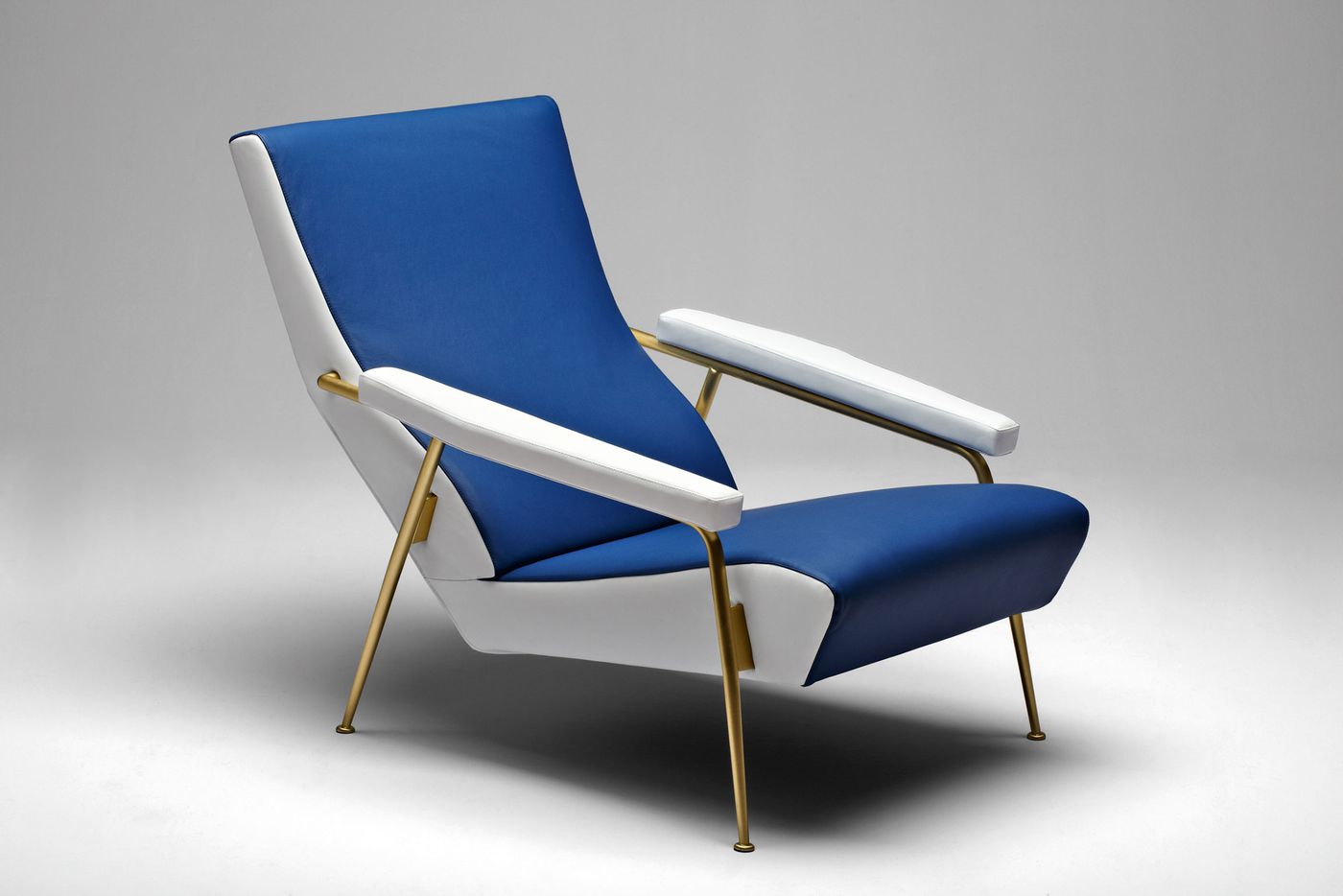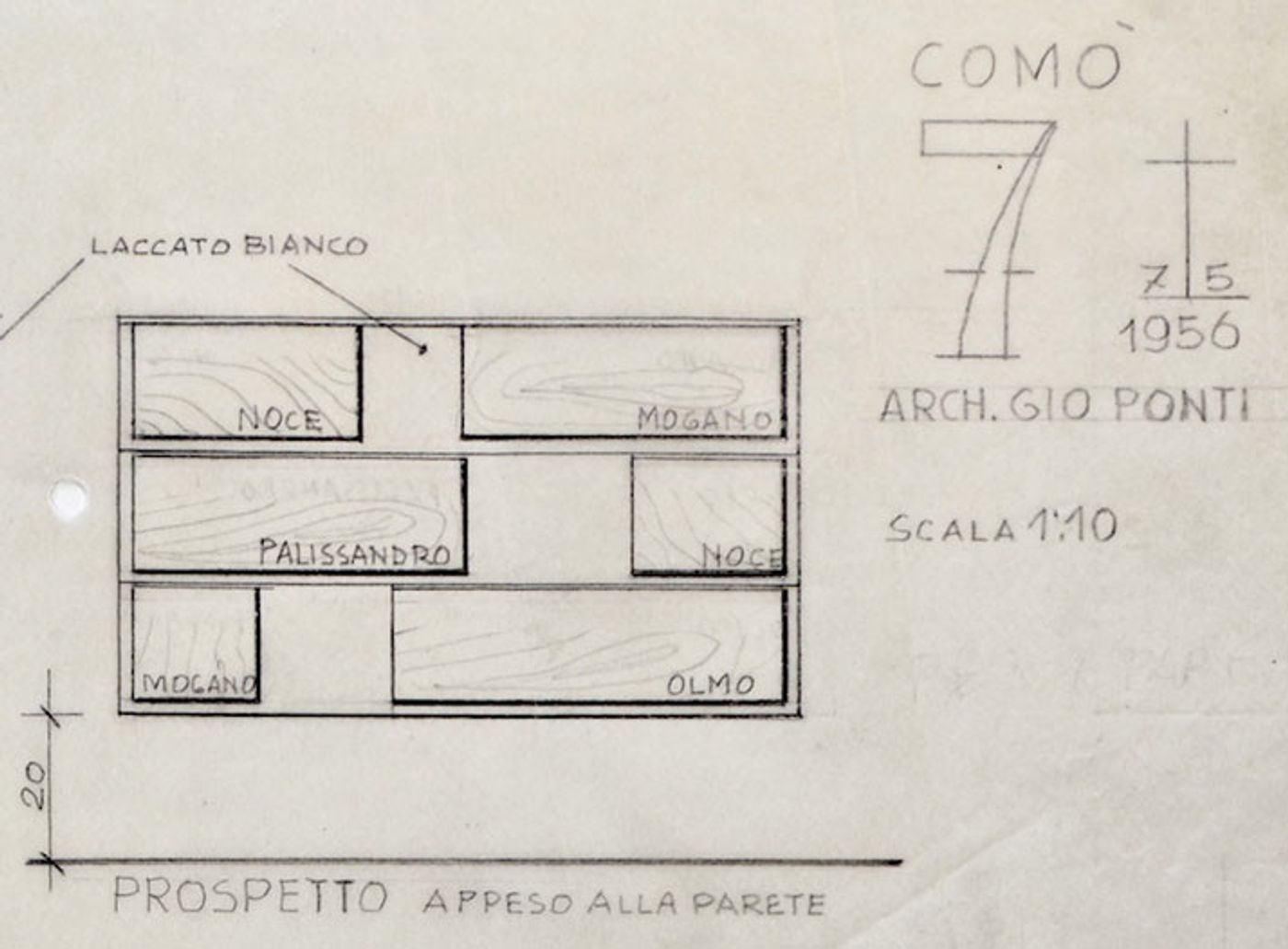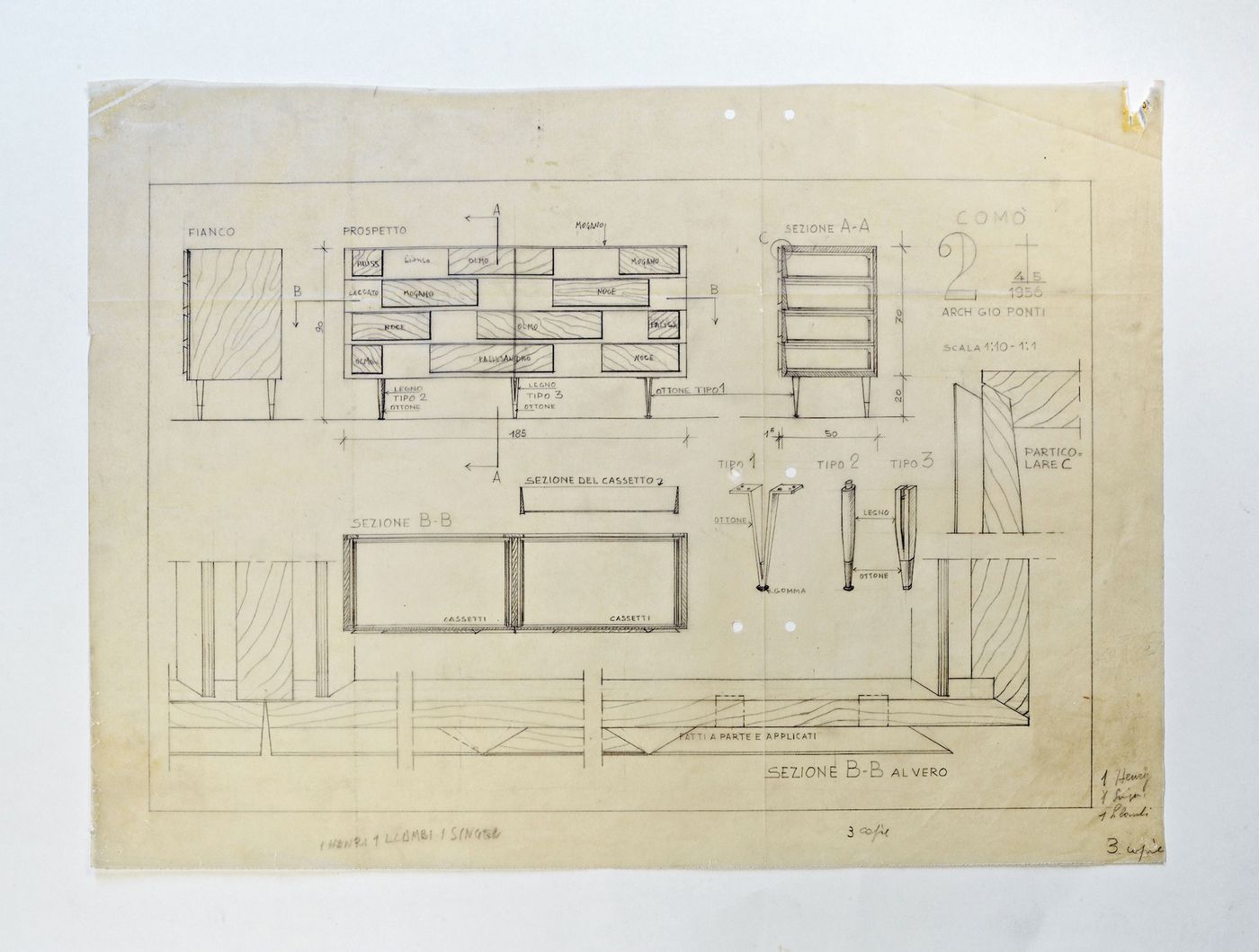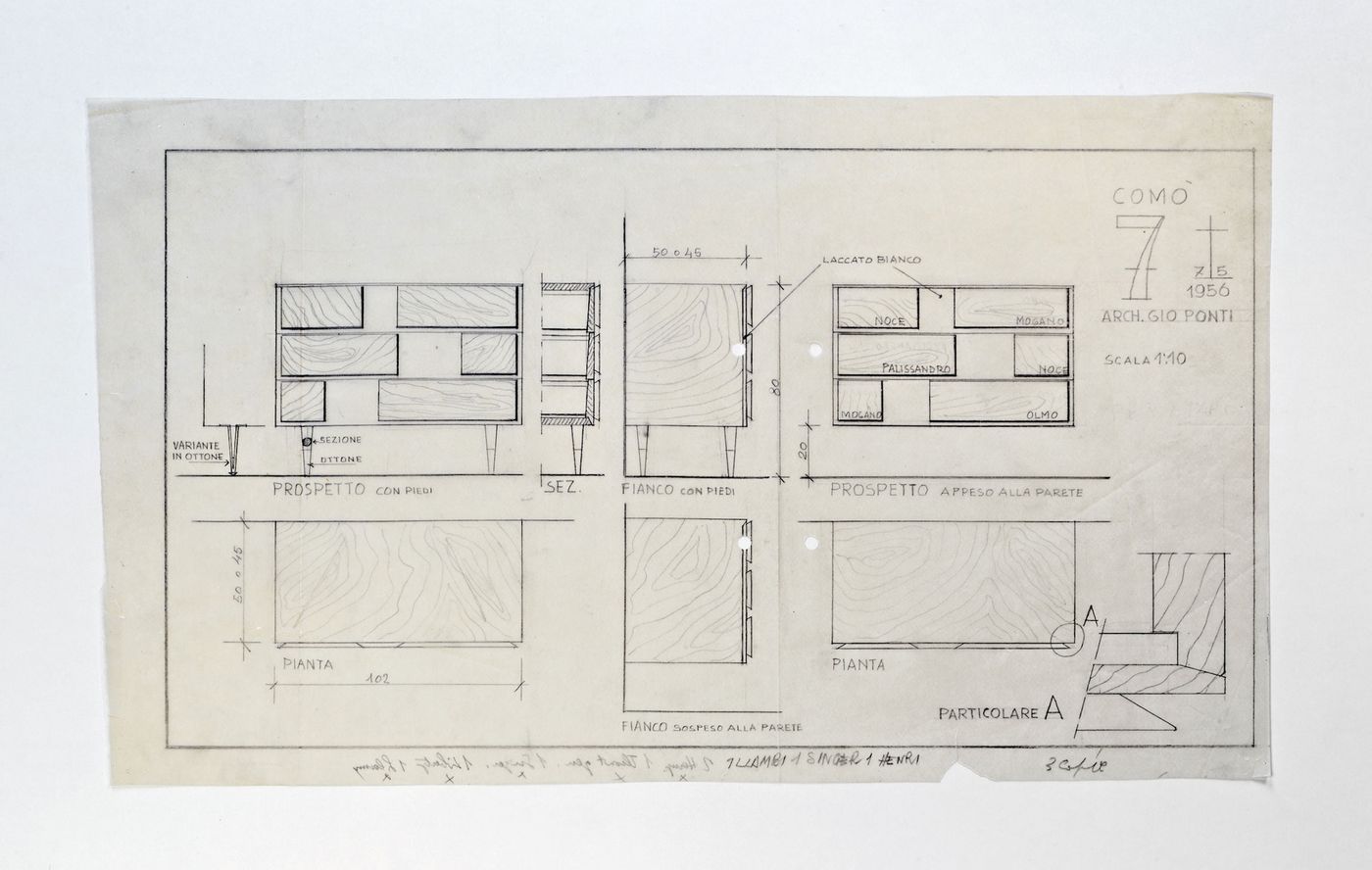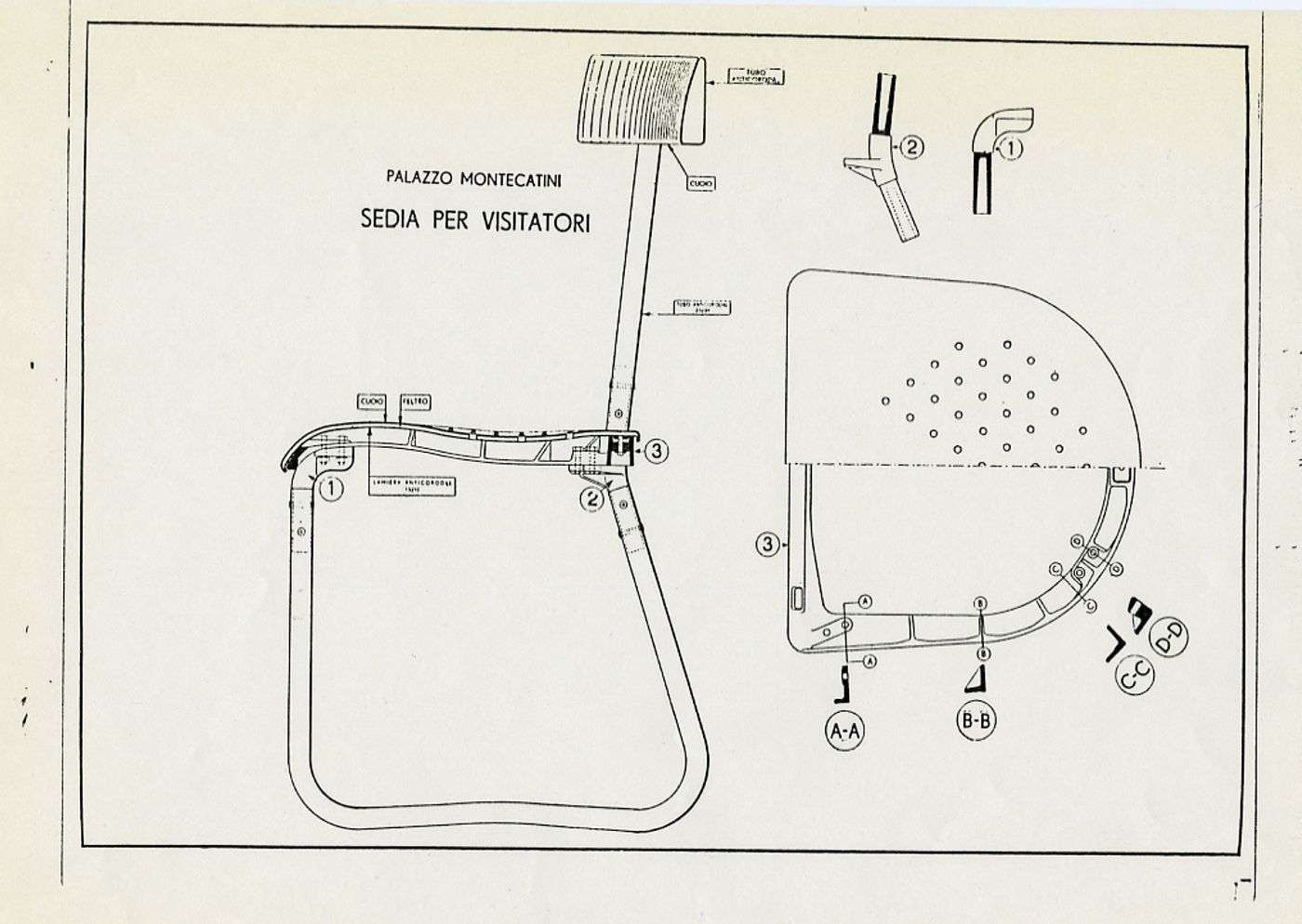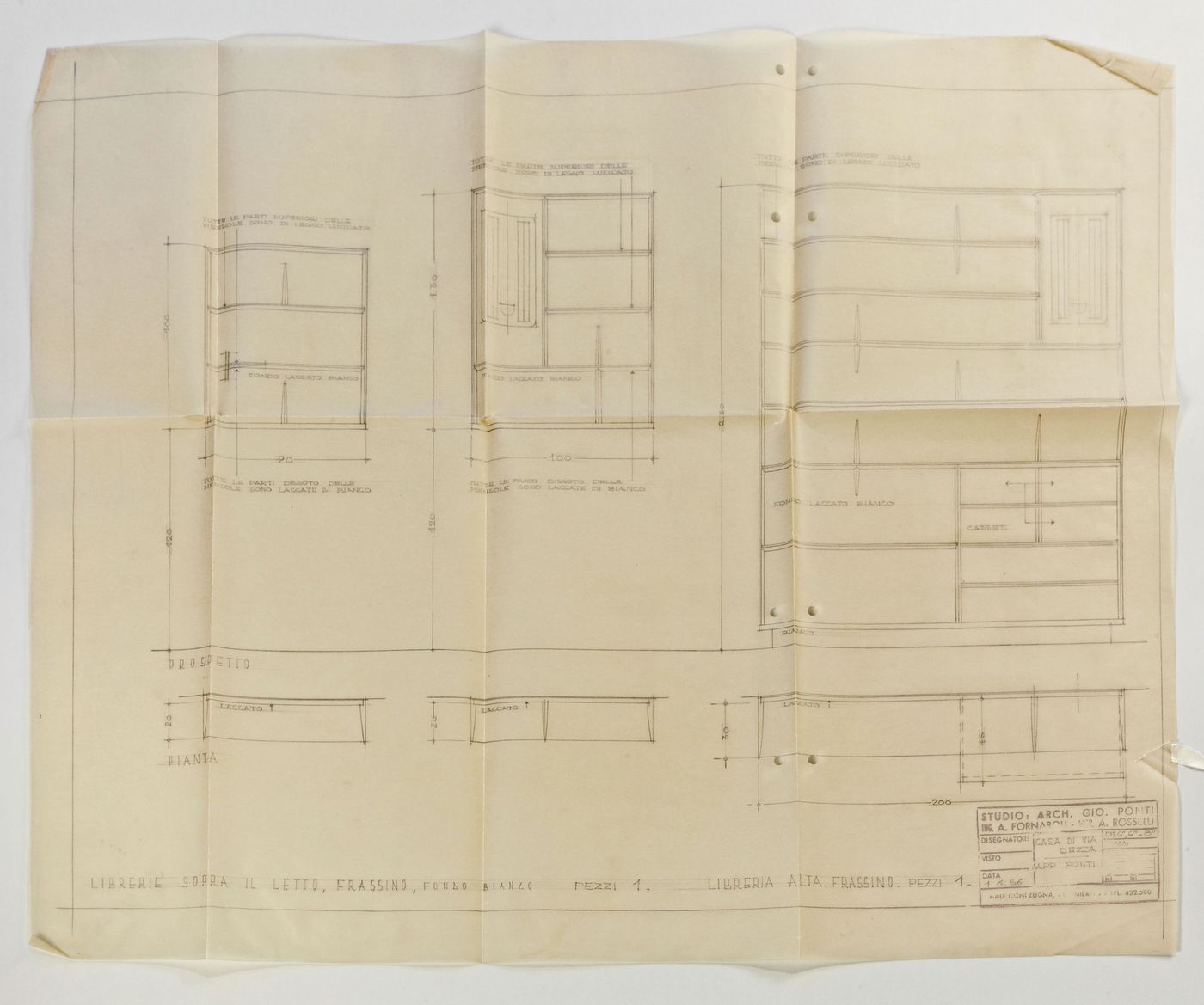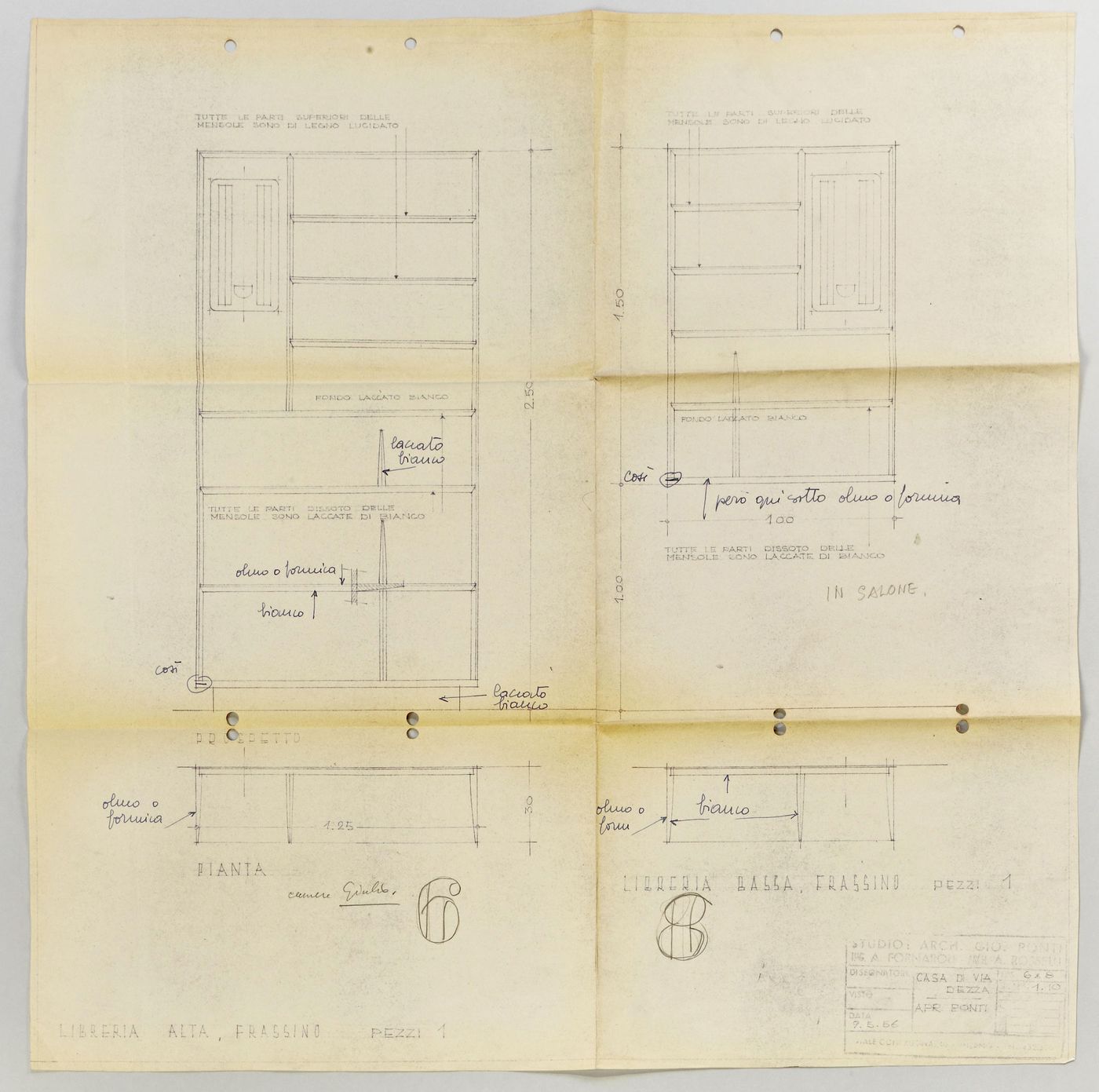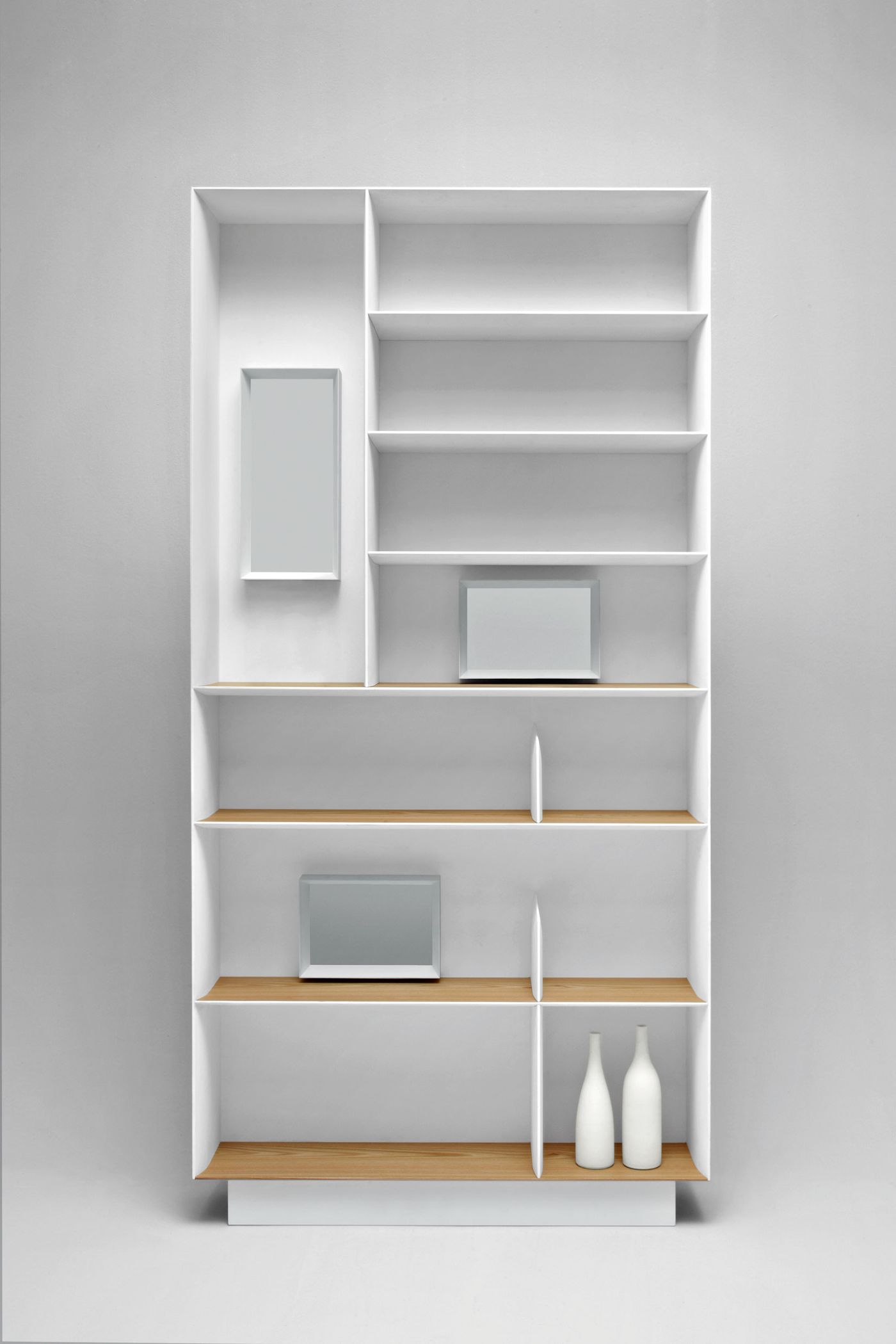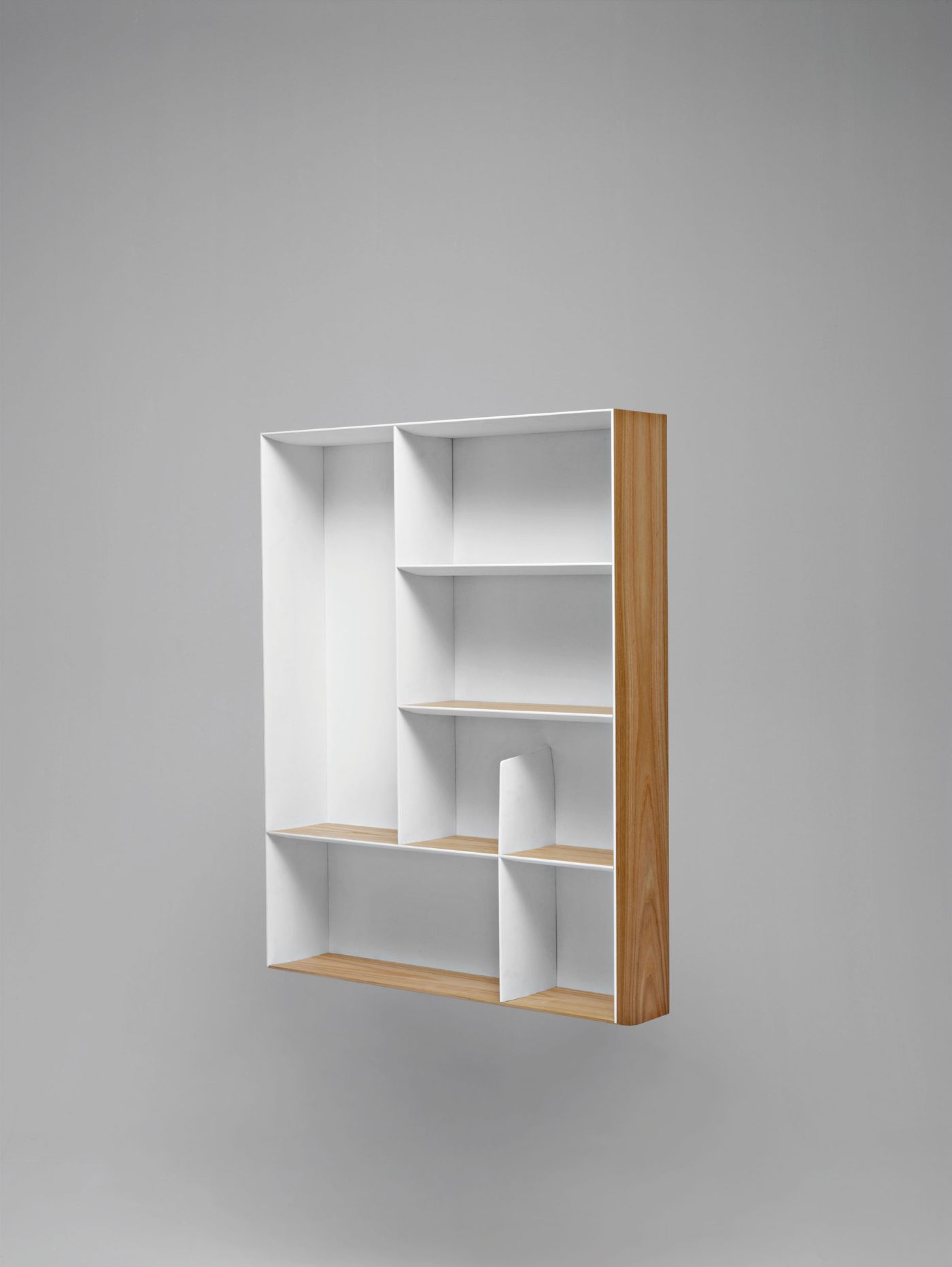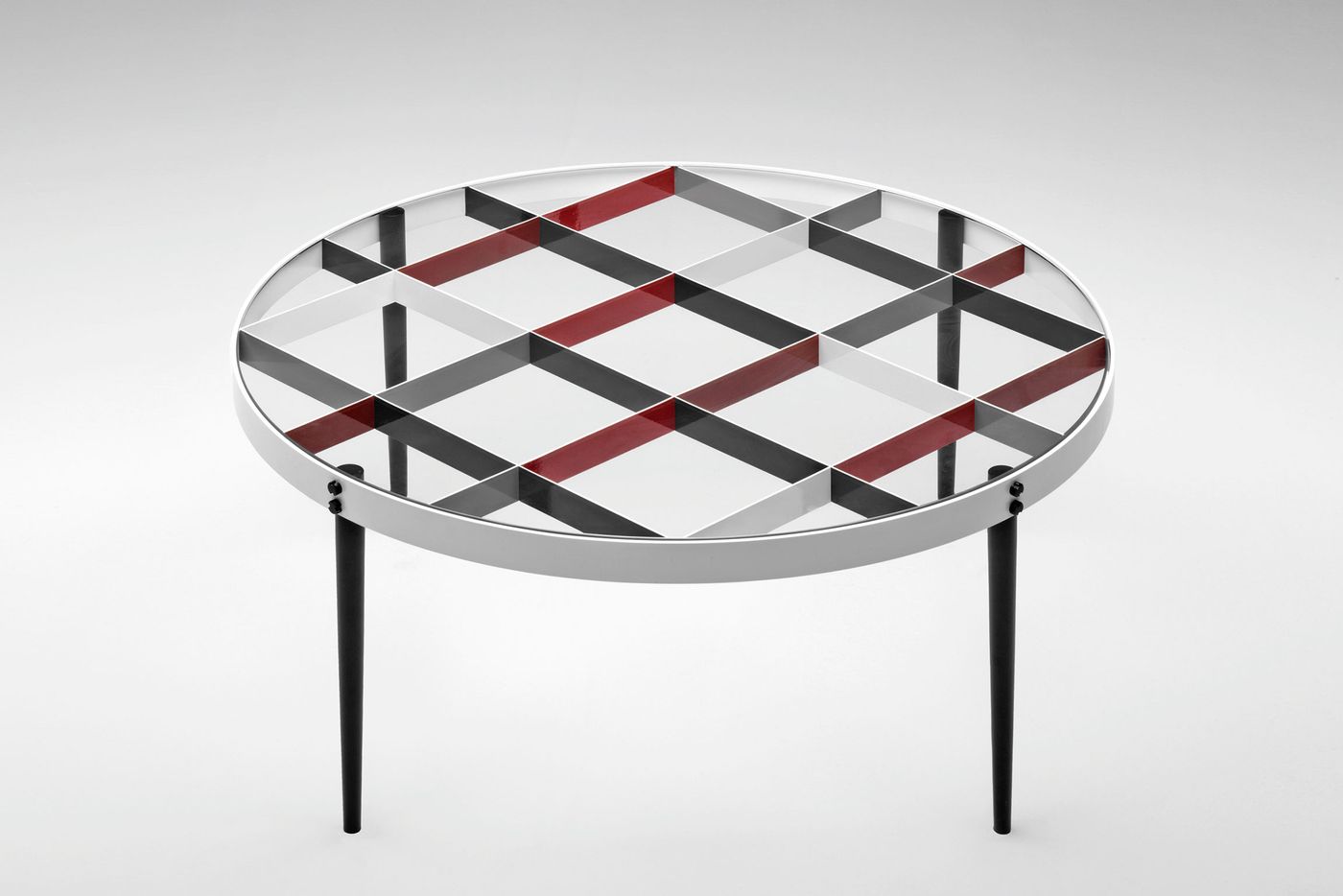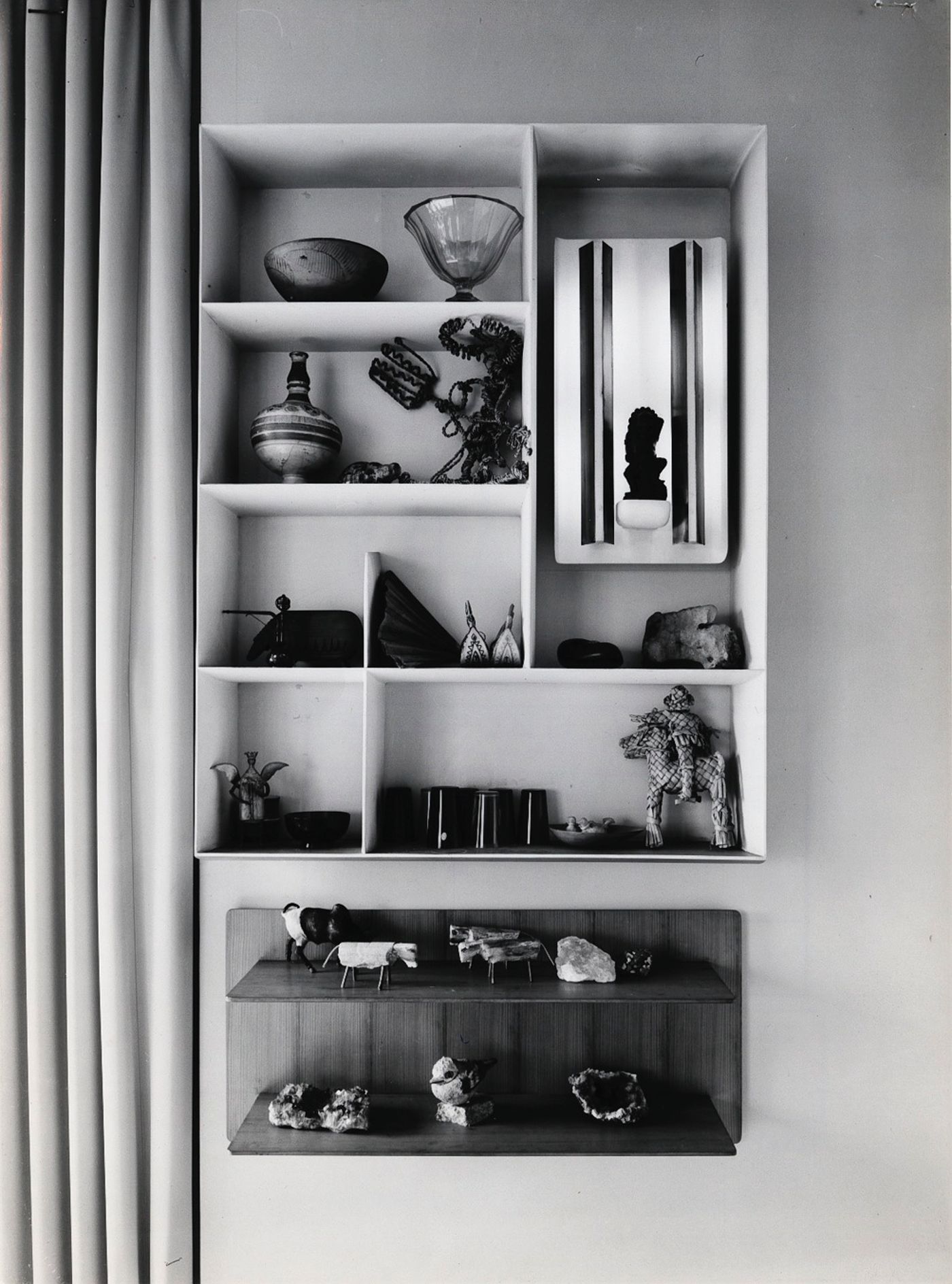
Vivere alla Ponti { Living Ponti-style }
Words by Demetrios Gkiouzelis
Location
During the past couple of weeks New York City played host to New York Design Week, thus becoming a design Mecca that successfully rivals long-established design capitals like Milan. From the ICFF / International Contemporary Furniture Fair, to NYCxDESIGN and the 'NOHO Design District' festival, the Big Apple both widely embraced and celebrated innovation and design (be sure to check out Yatzer’s carefully edited selection of all the best that this year’s NYDW had to offer).On the occasion of the ICFF 2013, Italian furniture giant Molteni&C and Dada decided to bring a little taste of refined Italian lifestyle to New York City by presenting ''Vivere alla Ponti'' [Living Ponti-style], a special two-part event that celebrates the work of the great master of Italian architecture and design Gio Ponti.
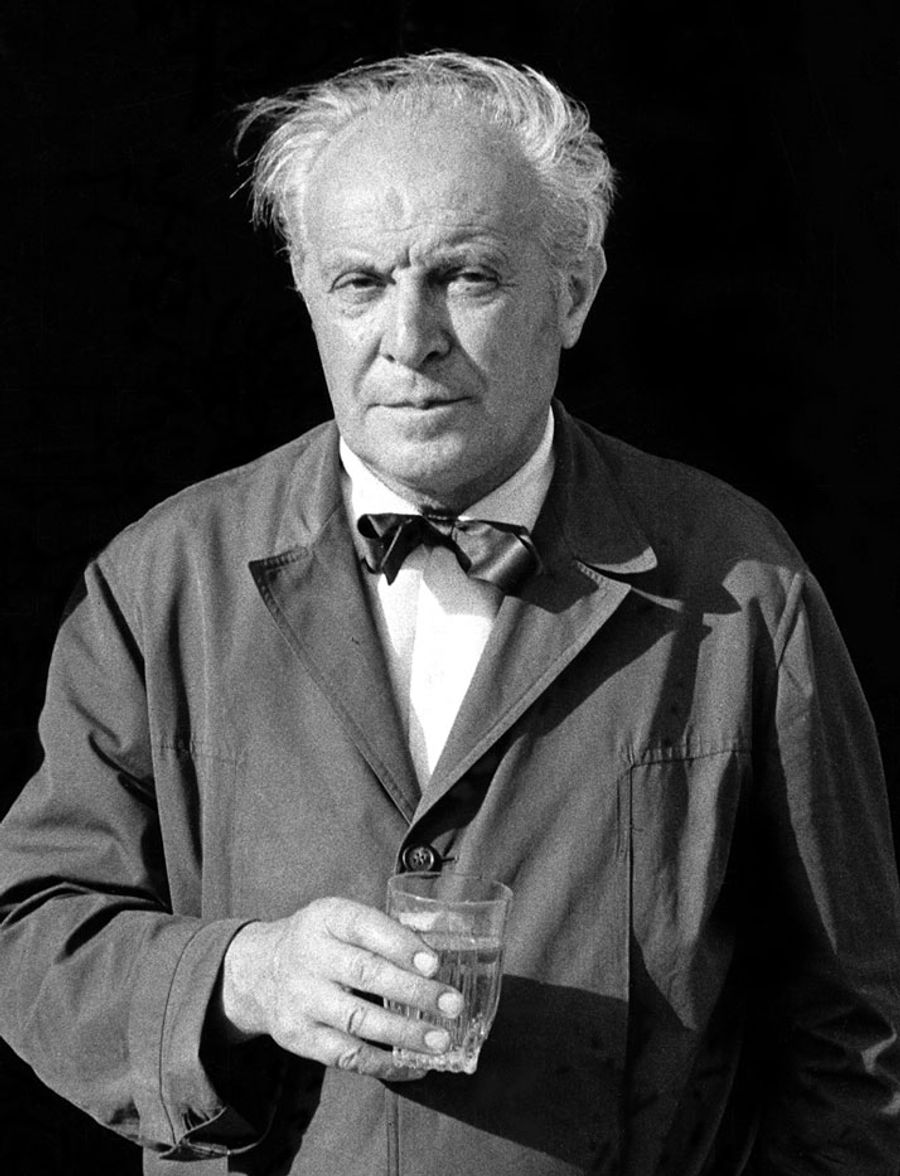
Gio Ponti in the yard of Villa Planchart in Caracas, 1955. Courtesy of Gio Ponti Archives.

Casa Via Dezza, Gio Ponti & family. Courtesy of Gio Ponti Archives.
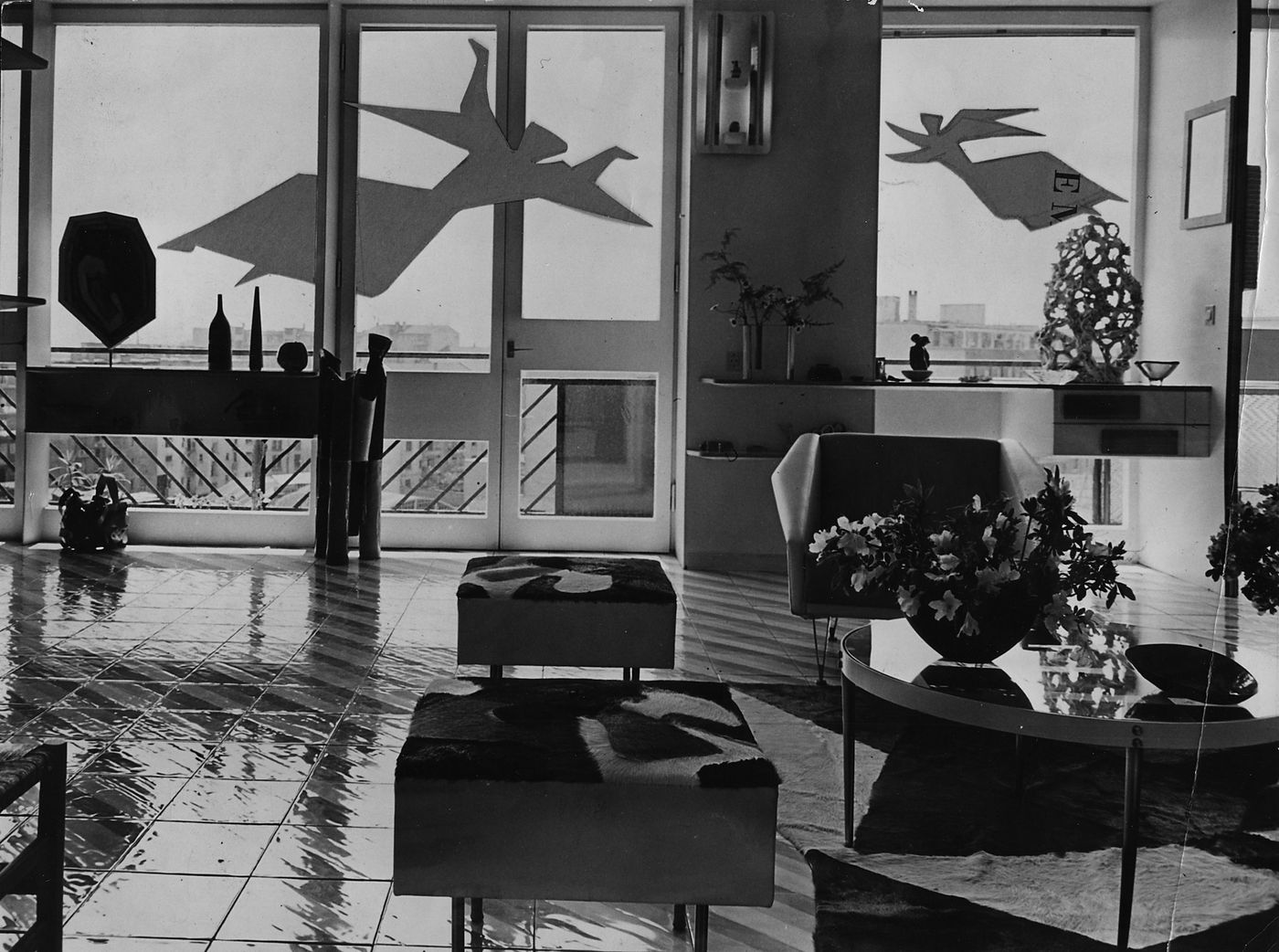
Courtesy of Gio Ponti Archives.
On the occasion of the ICFF 2013, Italian furniture giant Molteni&C and Dada decided to bring a little taste of refined Italian lifestyle to New York City by presenting ''Vivere alla Ponti'' [Living Ponti-style], a special two-part event that celebrates the work of the great master of Italian architecture and design Gio Ponti.
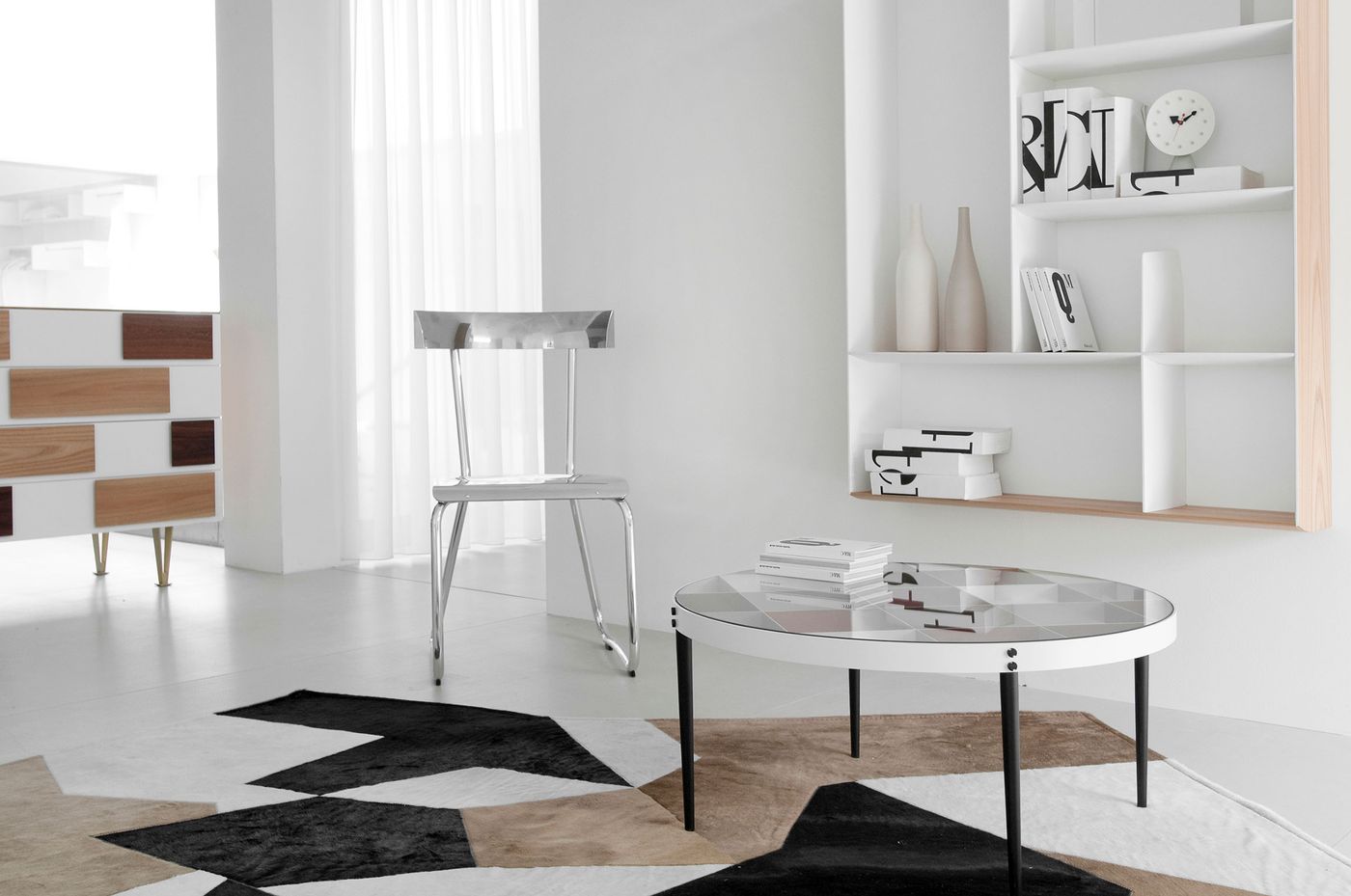
Courtesy of Gio Ponti Archives.
Gio Ponti himself was one of the most important and prolific of Italian architects, furniture designers, artists and publishers of the 20th century. Honoured with the Médaille d’Or by the French Academy of Architecture, he was also notably the founder of ‘Domus’ and ‘Stile’ magazines and the Compasso d’Oro award, as well as a writer and lecturer at the Milan Politecnico. Rightfully earning his place as a key figure within the history of Italian design, Ponti was known for revitalizing Milanese homes through introducing continuous fluid spaces rife with vivid colours as well as bringing natural light inside and making subtle use of wall to ceiling stripe motifs. He meticulously designed everything inside and out, paying attention to every single detail, dressing his spaces with furniture defined by exceptionally elegant geometries, smooth lines and sleek surfaces. His perfect house was one that stopped you in your tracks at the threshold, as you were taken aback by the human secret and architectural beauty within.
Offering New Yorkers the chance to experience firsthand the work of a designer that shaped the great Italian lifestyle, the Molteni&C Dada Flagship Store on Greene Street, Manhattan, now presents the Gio Ponti collection, a seven-piece collection of furnishings designed by Ponti between 1935-1957. And the Italian-style storm taking over New York doesn’t end here. Molteni&C Dada has teamed up with New York’s Istituto Italiano di Cultura to present the exhibition ''Vivere alla Ponti: Le case abitate da Gio Ponti. Esperimenti di vita domestica e architetture per l’abitare e il lavoro'' [Living Ponti-style. Houses inhabited by Gio Ponti. Experiments in domestic life and architecture for living and working].
Originally prepared for the 2012 Salone del Mobile by Milan’s Ordine degli Architetti and Muse, with Molteni&C’s support, the ''Vivere alla Ponti'' exhibition pays tribute to Gio Ponti’s genius and, through an intimate and at once professional narrative, the vitality of one of the great masters of Italian design. On show until the 2nd of June, 2013, the exhibition presents a collection of furniture and a series of letters, family photographs and videos that testify to the modernity of a key figure of 20th century design. For its U.S. showing the exhibition is further enriched with a section devoted to Ponti’s projects in the United States which include: the Alitalia offices (New York, 1958), the Time Life Building Auditorium (New York, 1959), the Denver Art Museum (Denver, 1971), the MUSA travelling exhibition of Italian furniture in the U.S.A. (1950-53), as well as furniture for M. Singer & Sons (1950s) and furniture and walls organized for Altamira (1953).
As Gio Ponti’s nephew, Salvatore Licitra, explains:
''...as Italians and Milanese, we have a duty to make people aware of Ponti’s heritage and to reveal a little-known archive. There are numerous forgotten works and products to be reedited, which also offer us a chance to understand the man, his work and a crucial moment in Italian architecture and design''.
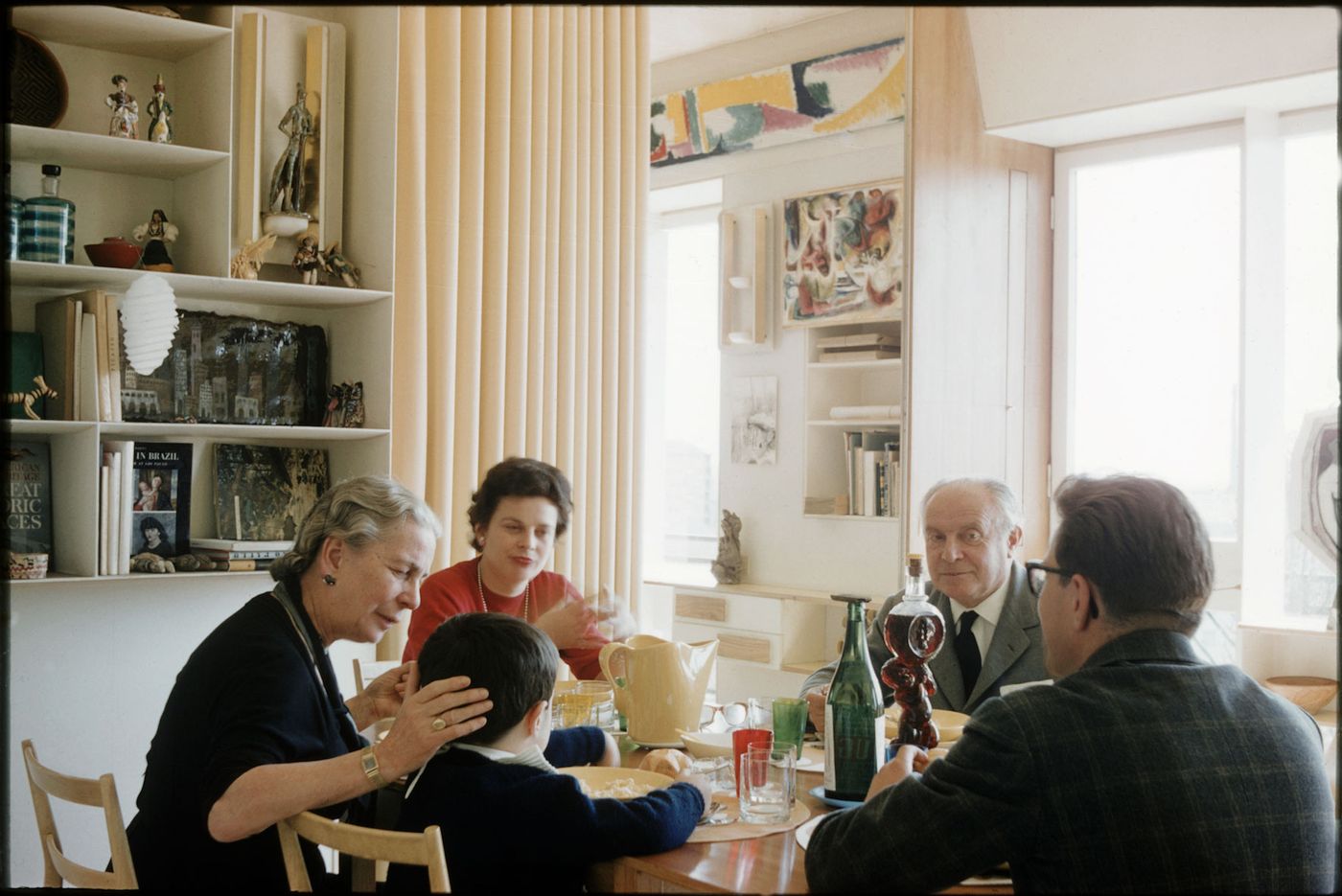
Courtesy of Gio Ponti Archives.
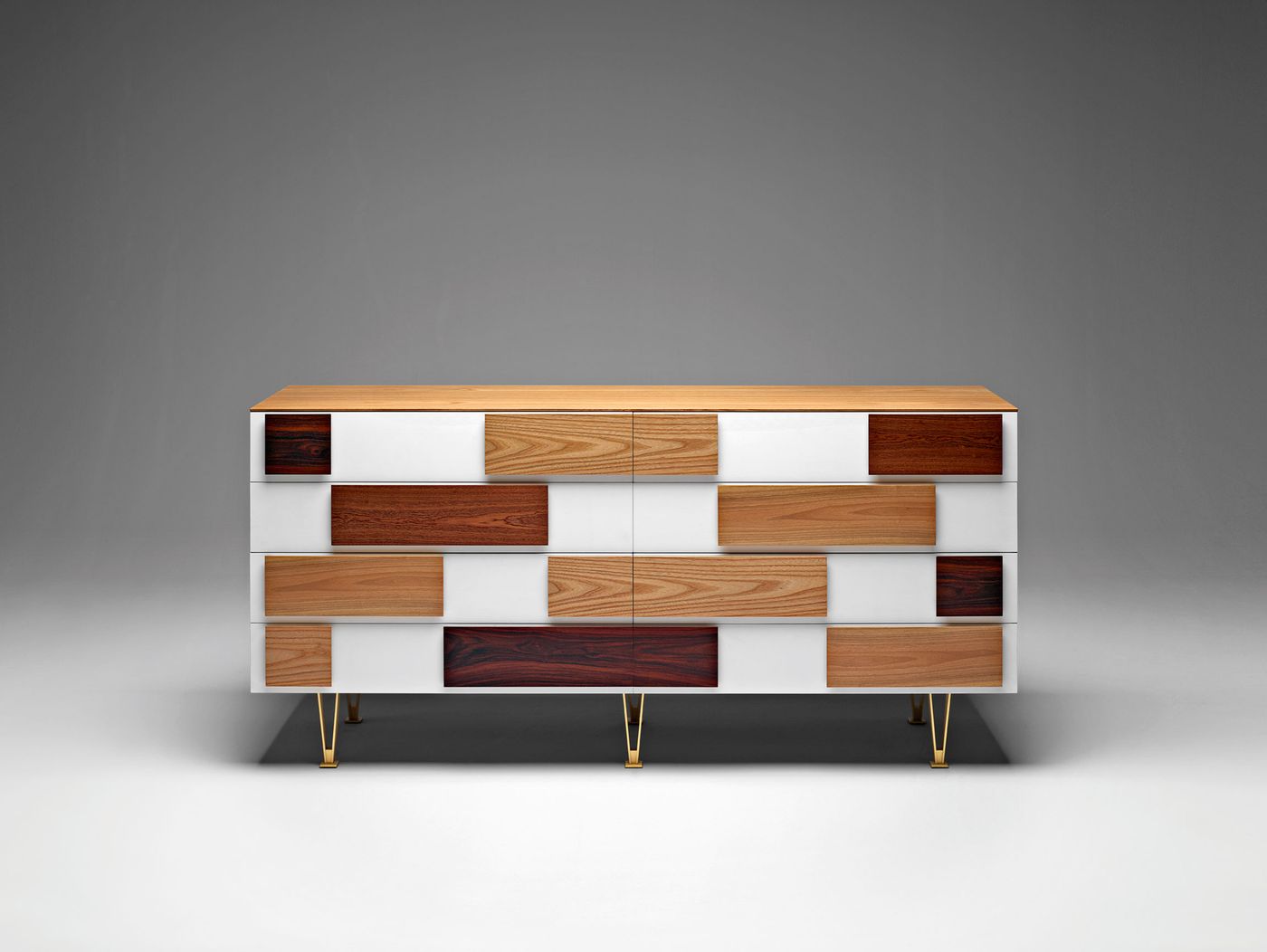
Chest of drawers from Ponti's Cassettone series designed in 1956. Courtesy of Molteni&C.
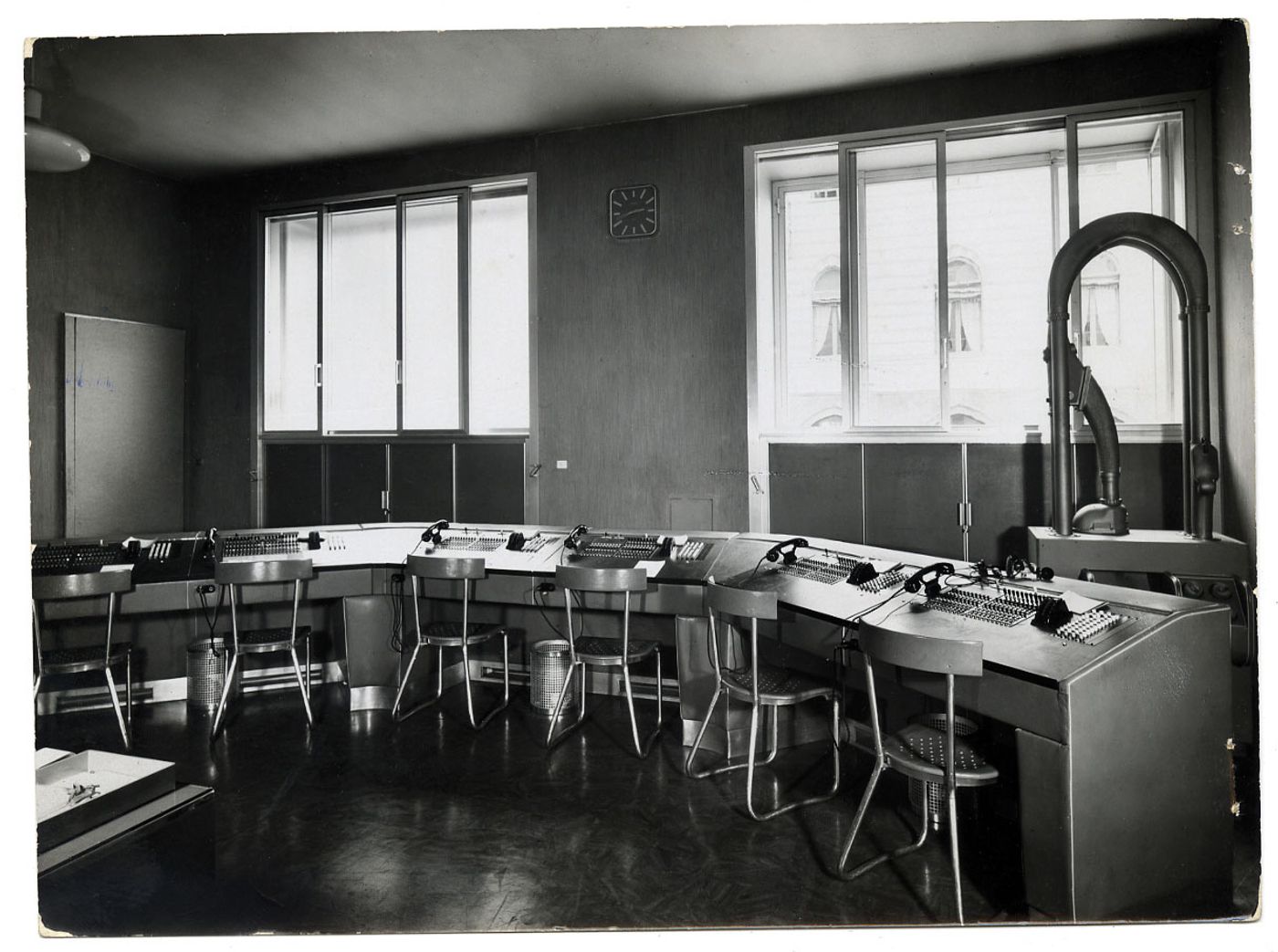
The Montecatini office in Milan. Courtesy of Gio Ponti Archive.
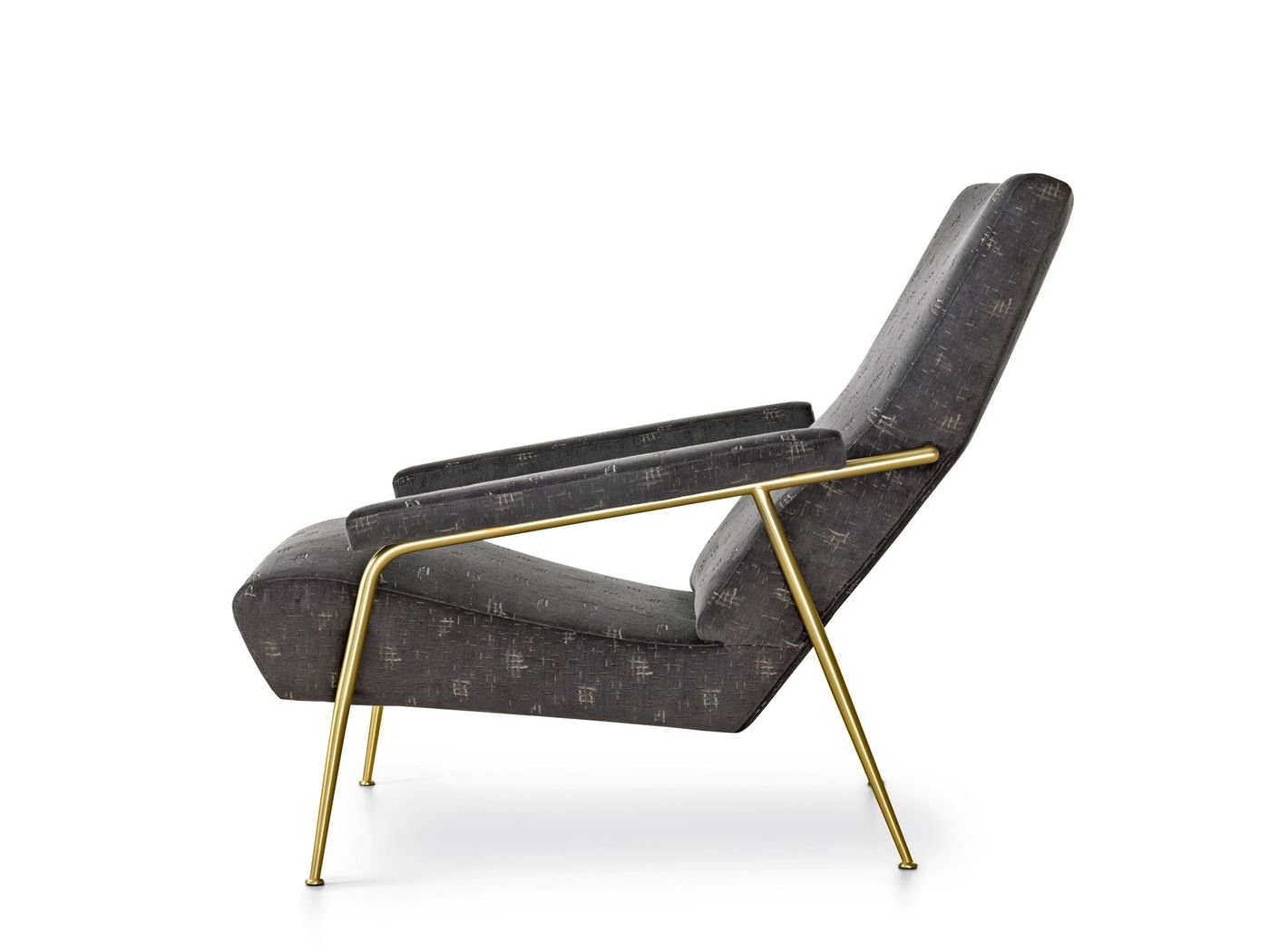
Limited edition Armchair designed by Gio Ponti in 1953 upholstered with Rubelli fabric. Courtesy of Molteni&C.
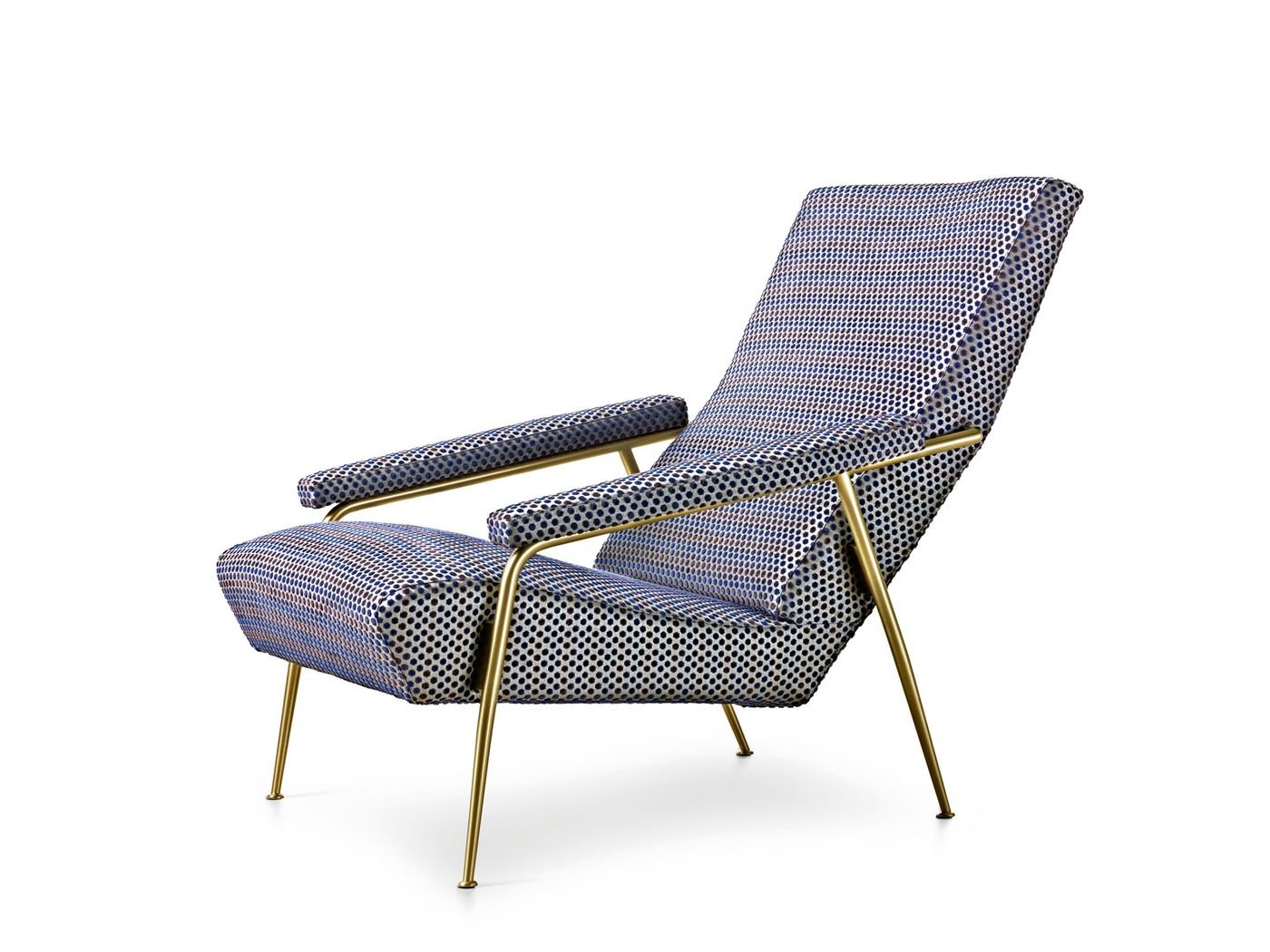
Limited edition Armchair designed by Gio Ponti in 1953 upholstered with Rubelli fabric. Courtesy of Molteni&C.

Limited edition Rubelli fabric. Photo Courtesy of Molteni&C.
